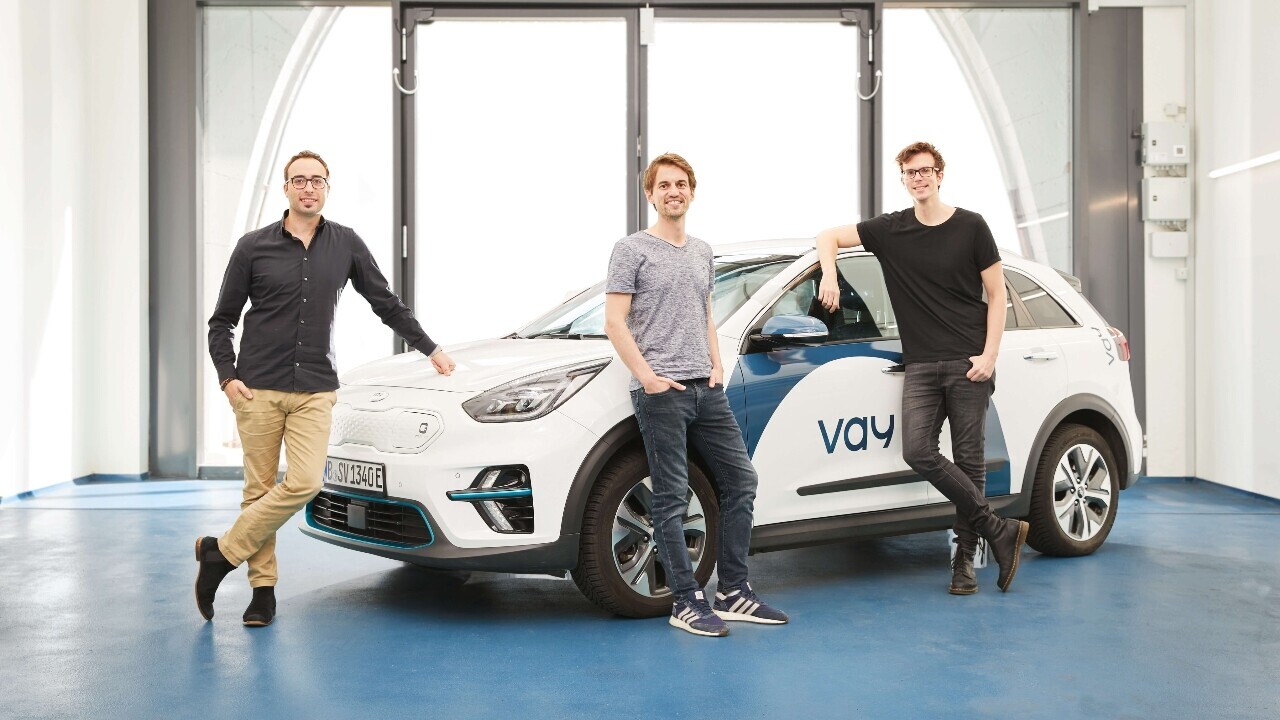
Last week I rented a vehicle through one of the many popular car-sharing platforms. The whole process went pretty smoothly and I didn’t crash, which is always a good thing. But the one inconvenient aspect was drop off and collection.
I had to cycle 10 minutes to the nearest available vehicle, store my bike somewhere safe, and then drive the car back home. When I was done with the vehicle I had to return it to one of the designated parking locations — always wary that the longer it takes to get there, the bigger the bill.
While car-sharing is designed to be more convenient than standard rental services, it could be about to get a whole lot convenienter (wait, that’s not a word is it?).
Soon you could simply open an app, click a button, and have a remote-controlled car driven to your door. Once you’re done using it you just apply the handbrake, get out, and leave it there in the street — no parking necessary.
German startup Vay calls it “teledriving” and plans to bring it to the streets of Belgium this year — provided it secures a permit from the authorities.
Teledriving your way around town
Vay has teamed up with Belgian car-sharing platform Poppy to roll out its tech in over 2,000 of the company’s vehicles. Ush, an expert in driverless systems, will maintain the remote-controlled car fleet and test them before they hit the road.
The cars — which range from EVs to petrol-powered hatchbacks — will be delivered to your doorstep by a so-called teledriver. These drivers control the vehicles remotely from a purpose-built station equipped with a driver’s seat, steering wheel, pedals, and three monitors providing visibility in front of the car and to its side.
Road traffic sounds, such as emergency vehicles and other warning signals, are transmitted via microphones to the teledriver’s headphones. This operator could technically be sitting on the other side of the world. Most will be nearby at one of Vay’s teledriving centres.
The model is now beginning to appear on public roads. In January, Vay rolled out a commercial service in Las Vegas, Nevada. If the partnership with Poppy gets the regulatory green light, it would mark the startup’s first launch in Europe.

For customers, teledriving is billed as a more convenient alternative to traditional car-sharing. For operators, it could mean the difference between success or failure.
“Remote driving can increase profitability in a sector known for fine margins,” explained Justin Spratt, chief business officer at Vay. The company claims it can double the amount of time vehicles are in use, boosting revenues.
A quicker route to driverless cars
Teledriving is billed as a midway point between conventional cars and autonomous vehicles, which are proving much more difficult to implement than first thought.
Vay has shown it can provide an effective stepping stone. Last year, the startup became the first company to operate a car without a driver inside on a public roads in Europe.
“Given recent challenges in the autonomy industry, automotive-grade teledriving can offer an alternative path to safe ‘driverless’ transportation, as a human driver is always in control,” Vay CEO Thomas von de Ohe previously told TNW.
In December, Vay raised $95mn (€87mn) in a Series B round. The funding signals investor confidence in a technology that could offer a faster route to market than fully autonomous vehicle ventures like Tesla, Waymo, and Cruise.
Get the TNW newsletter
Get the most important tech news in your inbox each week.





